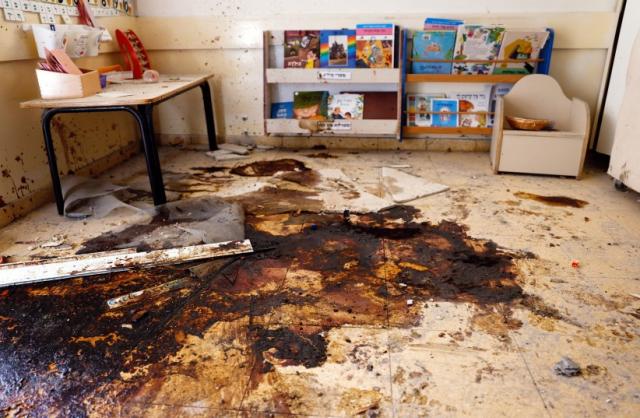A month has passed, and the haunting memories of Kibbutz Be’eri linger in every corner, with the pungent smell of death still present. This once-thriving community in the Gaza Strip, the largest kibbutz of its kind, found itself deserted for agonizing hours, vulnerable to the onslaught of hundreds of terrorists, bearing the scars of a fateful encounter. In the wake of this tragic event, a tenth of the kibbutz's residents bore physical wounds, while the spirits of all were forever marked by the loss of 96 beloved kibbutz members, the abduction of 32 others, and the lingering uncertainty surrounding four missing individuals.
Today, Kibbutz Be’eri stands far removed from its past. Instead of children's laughter and the rhythmic hum of tractors in the fields, the landscape is populated by trained reservists on the verdant grass. The picturesque houses, once symbols of warmth and happiness, now serve as the backdrop for the Ministry of Defense's diligent teams, meticulously searching for remnants of fallen and unexploded projectiles that threaten to shatter any semblance of normalcy.
Look at the story of Kibutz Beeri pic.twitter.com/HY4VLm7UkT
— Ben Caspit בן כספית (@BenCaspit) November 4, 2023
This week, a collaborative effort involving the Antiquities Authority and the Takuma administration, specializing in the rehabilitation of all the damaged townships, descended upon Kibbutz Be’eri with a profound mission—to document, preserve, and immortalize the atrocities committed during the horrific Hamas massacre of October 7.
Netanel Izak, the dynamic CEO of the Ministry of Heritage, overseeing the Antiquities Authority, led a delegation of senior officials from the Antiquities Authority and experts in the field. Also in attendance was former MK Zvi Hauser, who championed the establishment of the National Heritage Infrastructure Restoration Project.
"Merely two weeks after the harrowing incident, we recognized the urgency of documenting and preserving the painful memories," declared Izak. "In history, it took several years before some began to deny the Holocaust. Yet here, disturbingly, there are already attempts to deny the tragedy by some voices worldwide, even within Israel, right from the outset. We will not allow this to happen. While it may not appear as the foremost concern at this very moment, with ongoing military operations and the chaos in the south, the reconstruction efforts, and the welfare of the residents, in 50 years, we will look back and recognize that this was one of the most vital endeavors we undertook."
UH volunteer EMT Yehezkel Rosenbaum revisits a house in Kibbutz Beeri where he was one of the first responders following the October 7th massacre perpetrated by Hamas. #Beeri #Israel_under_attack pic.twitter.com/pZe4EVWyx5
— United Hatzalah (@UnitedHatzalah) November 5, 2023
Izak and his dedicated team have devised a twofold approach to commemorate the events that unfolded in the kibbutz. Firstly, they will engage in physical documentation through visual and 3D photography. Secondly, they are experimenting with an innovative approach during their tour of Be’eri and subsequent visits to other kibbutzim. This approach involves preserving as many buildings as possible in their current state, particularly those houses that bore the brunt of the violence at the outskirts of the villages. The aim is to create a lasting tribute without transforming the entire kibbutz into a melancholic memorial.


